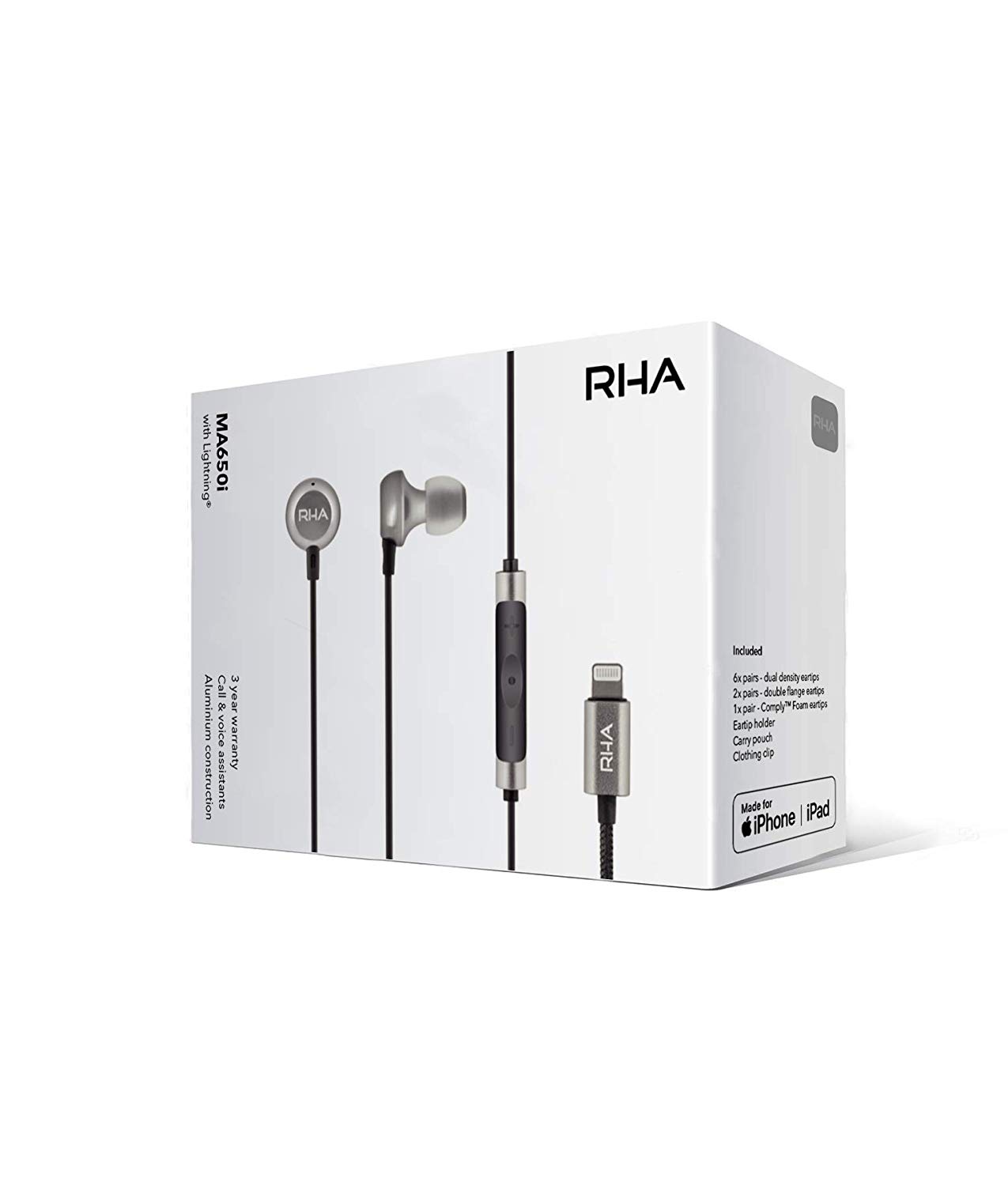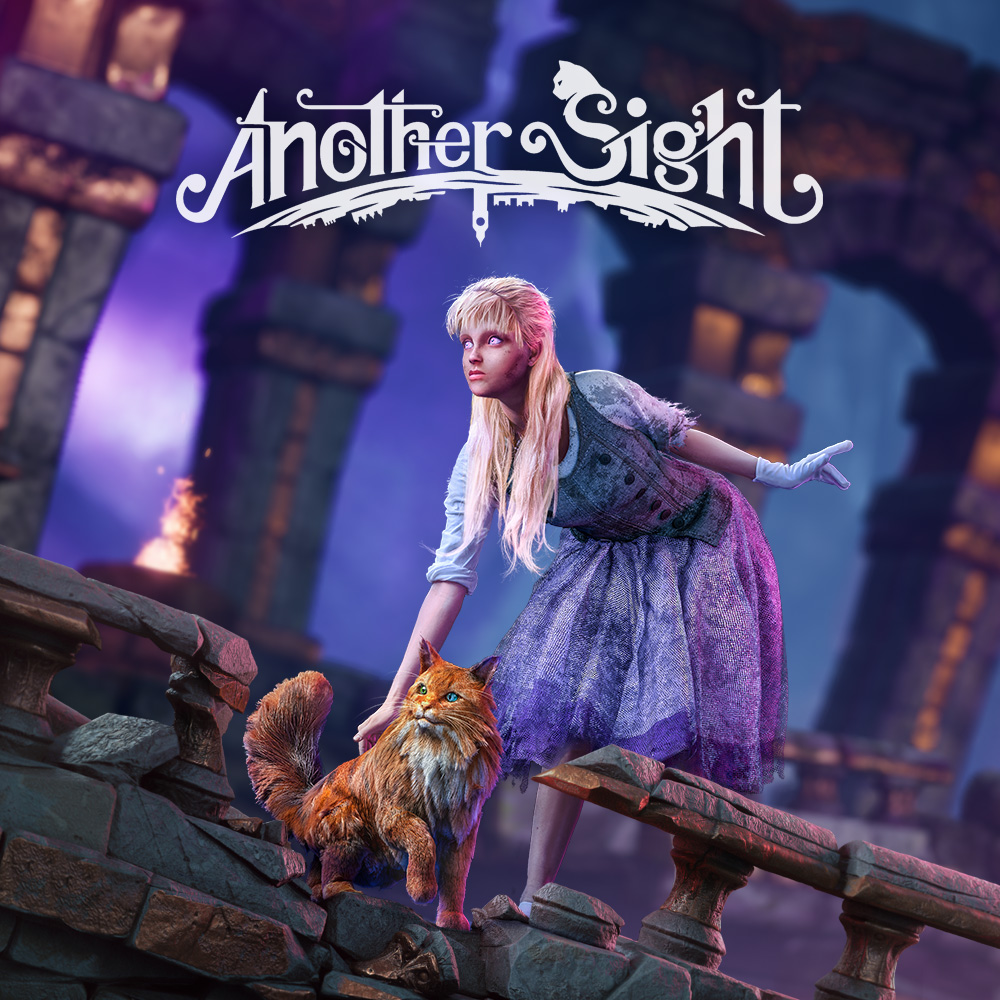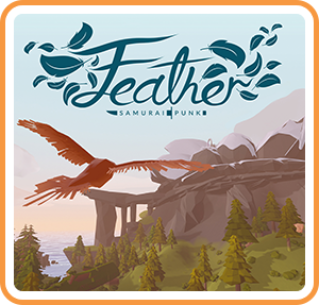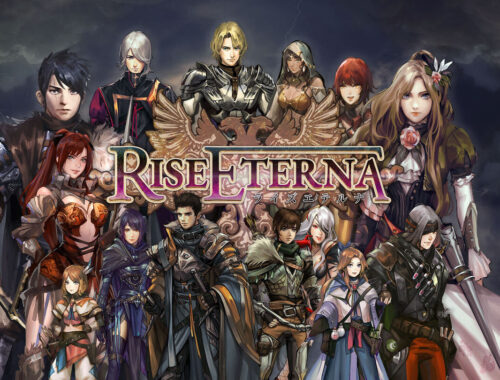Racket:Nx | Review
Game Details
Title: Racket:Nx
Developer: One Hamsa
Publisher: One Hamsa
Website: https://www.racketnx.com
Genre: Arcade, Sports
Platform: Oculus Quest
Audience: PEGI 15
Release Date: 18/06/19
Price: £14.99 – Rapid Reviews UK was very kindly provided with a review code for this title.

Mother knows best
Racket:Nx for Oculus Quest was referred to me by my mom. She’s the most ardent Quest fan I know, and it’s something we bond over when we see one another. On this particular occasion, a family member’s birthday no doubt, she was extolling the virtues of this racket ball game. Like a good son, I listened, though not entirely interested, as she described it to me.
In between bites of under-cooked and over-priced beef, I told her that “I love the Quest, but it seems like every other game is either hitting a ball or shooting something in the face.” She immediately took a defensive posture and, in a loving mom kind of way, politely told me I was talking rubbish. She’s usually right about these things, so I listened more intently. What she described sounded less like racketball and more like…well, a lot of things.
Not just another tennis game
The Developer, One Hamsa describes Racket:Nx as “Racquetball meets Breakout inside a giant pinball machine” and I think that’s an apt description, though not perfect. Racket:Nx certainly takes elements from those games but pieces them together into something new and unique. Sure, at its heart Racket:Nx is a racket ball game. You hit a ball into a wall, and when it bounces back, you do it again, just like you would in reality. Virtual reality, however, allows for so much more and Racket:Nx for Oculus Quest takes full advantage of it.
The game takes place inside of a dome constructed of hexagons. With you at the centre of it, the goal is to hit a ball into highlighted areas on the walls around you. While hitting the ball straight into one of the hexagonal pieces will see it ricochet back at you, doing so at an angle and with force sends the ball gliding along the wall and hopefully into a highlighted area. Hitting a highlighted area enough times will remove it similar to a brick breaker game like Breakout or Arkanoid and removing all of them will advance you to the next wave.
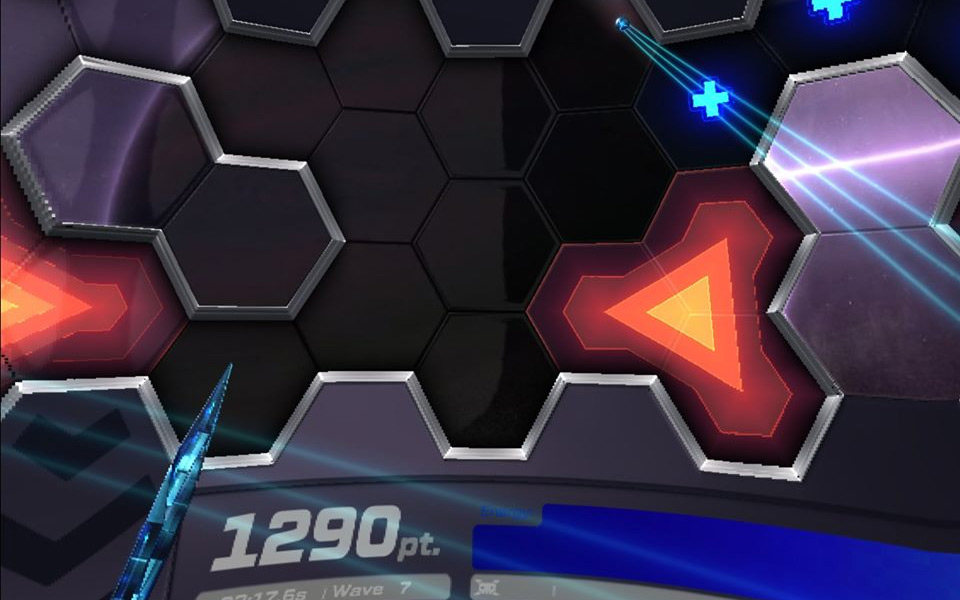
Waves? Where I’m from they’re called stages
This basic concept increases in complexity and difficulty with each successive wave. At first, there are only a few highlighted areas spread evenly around the dome, and each can be dismissed without any issue – blindfolded, in fact. From there, the targets get smaller, and new elements are added in at a steady pace. For example, the hexagons that make up the playing surface may be pushed in or out forming wells that the ball falls into and bounces around a bit before being spit out. Channels are also created in this way that forces the ball along set paths, sometimes into hazards. The combined effect results in the chaos and uncertainty of a pinball bouncing across its playfield.
At the base of the dome is an energy gauge that doubles as your life meter. When depleted, you have a few seconds to add to it before the game ends. For the first few waves, it’s inconsequential, but eventually, energy hazards will be spread across the walls of the dome-like a minefield. Hit one, and it saps a small chunk of energy from the energy bar. Hit enough of them, and you’ll be restarting the game. They can be especially troublesome when surrounding the target you need to hit. However, it’s not all bad news. Along with the hazards are energy refills that add to your meter. Therefore, choosing where and how to hit the ball becomes paramount to success.
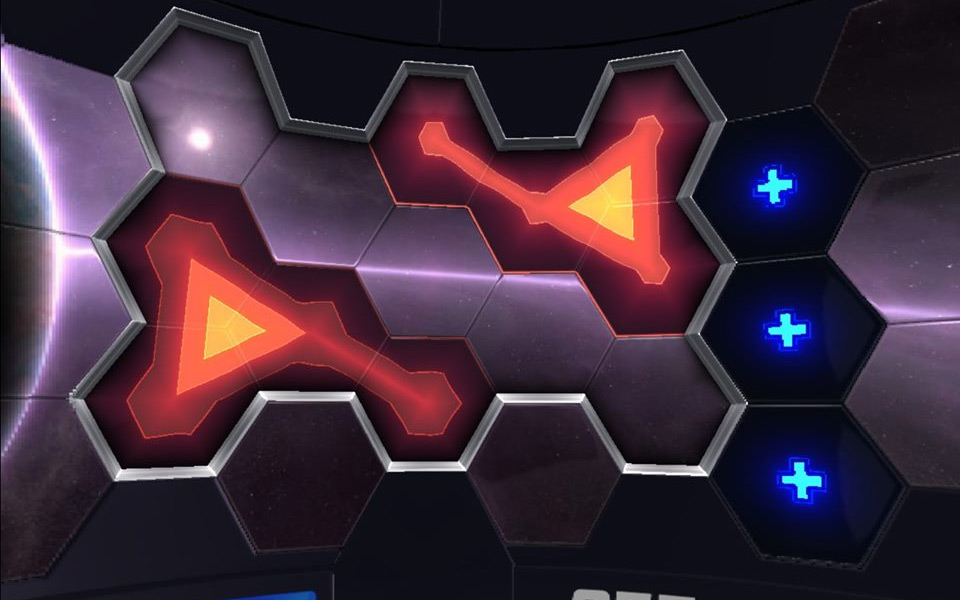
A game of skill
Racket:Nx for Oculus Quest is still a game of skill though, and the developers included a function that keeps you from being too much at the mercy of the ball. By holding down a trigger button, you can call the ball back to you at any time with a tractor beam. This results in a loss of momentum but can be a lifesaver if you find your ball in a dangerous area. Warp tiles that suck in your ball and shoot it out elsewhere are sometimes intermingled with the energy tiles. These are less of a hazard and more of an annoyance but can be mitigated with a well-timed tractor beam.
Tiles that increase or impede the speed of the ball can also be peppered into the mix. Hitting one could begin or end an impressive run of points, eliciting a response from the enthusiastic announcer. So, it’s essential to know what each tile looks like and try to plan accordingly.
Power-ups round out the gameplay elements. They are the same size as the hexagon tiles that make up the dome but float around you a few feet from the walls. They’re not exactly easy to hit but managing to do so gives some advantage. In my play-through, they either added to the energy gauge, the points total or transformed the ball into a ‘multi-ball’ with smaller balls temporarily trailing and surrounding the main ball. There may be more effects, but in my experience those were the only three.
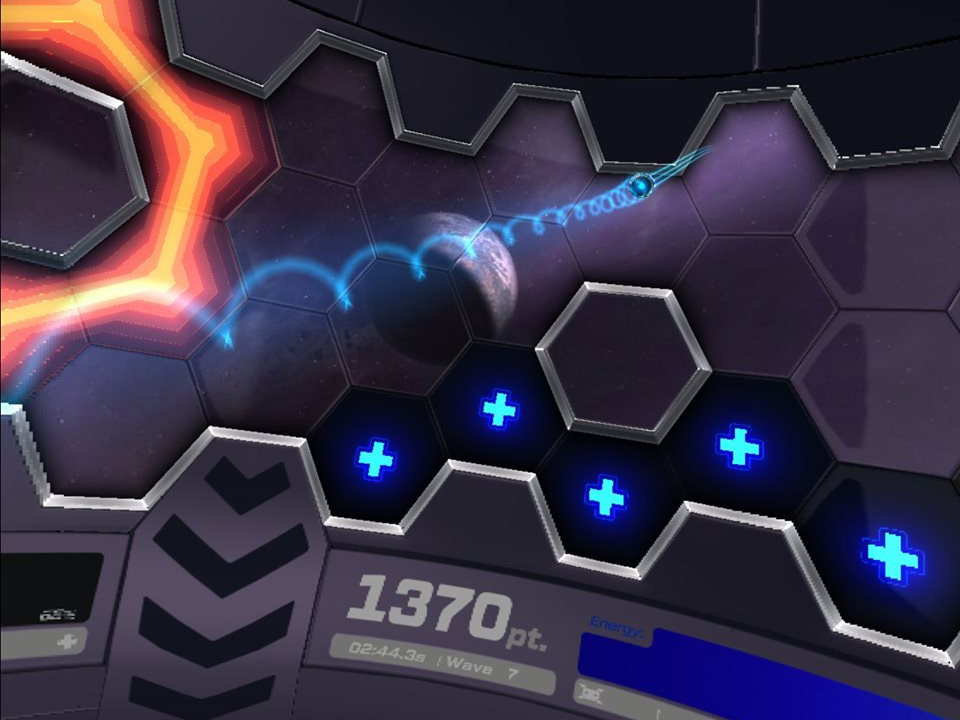
Bells, whistles, and show tunes
The audio in Racket:Nx is fantastic. Energetic techno/dance type music thumps along to the action and fits the setting perfectly. If you’re more of a show tunes type of person (and who isn’t) the ability to play your music is as easy as loading mp3s into a folder and flicking a switch in-game. All tracks can be skipped or repeated just in case you wanted to listen to Chitty Chitty Bang Bang ten times in a row but not an eleventh. The spacial audio, however, is the real standout. Arcade blips and bloops fill the space in a realistic way that can be tracked with your ears and help you keep tabs on the ball, no matter where in the dome it is. Even more than the visuals, the sound sells the illusion that you’re playing a game in the real world.
Graphics are mundane when compared to other titles, mostly due to the nature of the game. There isn’t a need for high polygonal models or high-resolution textures here. The lighting effects though are top-notch. I’ve not yet seen an Oculus Quest game with such high-quality transparencies and blur effects. It feels like an arcade experience enticing you with all its bells and whistles to play further.
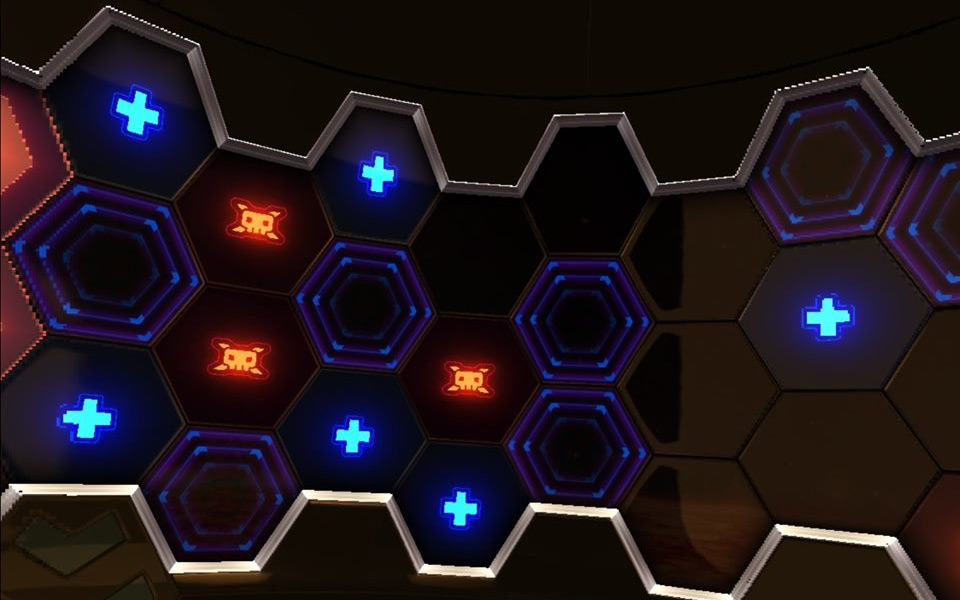
Gameplay options
All of this is packaged into three modes: Arcade mode is an endless onslaught of wave after wave and is good for practice or for a leisurely stress-free session. In Solo mode, your matches are timed and ranked on a global leader board. It’s also broken down into several different levels of competency, ranging from novice to expert. Multiplayer is comprised of ‘competitive’ and ‘friendly’ options. Both modes have you, and an opponent takes turns, hitting the ball and scoring points. The former ranks your score whereas the latter is only concerned with whom won. Selecting Competitive mode immediately sent me into a match with a random person with no waiting time whatsoever. In friendly mode, I was able to choose from my Oculus friends list, but there’s also the option to select an opponent based on a three-digit code you can give out to others.
Racket:Nx released on the other headsets last year but is best experienced on Oculus Quest. Though it’s mainly played from an unchanging centre position, not having a cord to get tangled in when turning around is magical. Moreover, I was able to manoeuvre in any way I wished without apprehension. The inside-out tracking of the system never failed to track my racket accurately, even when swinging from behind. I was routinely able to switch the racket from my left to right hand on the fly without missing a beat. It’s also accurate enough to gesture to other players when not using the mic.

In conclusion
With its flashy visuals, special audio, and seemingly perfect controls; Racket:Nx for Oculus Quest is an immersive experience that offers true pick-up and play gameplay with many hours of replayability. It’s undoubtedly one of the best tennis type games available in VR today. We therefore highly recommend it to fans of the genre and anyone that likes to hit things repeatedly.

You can purchase Racket:Nx from the Oculus Quest Store on the following link, https://www.oculus.com/experiences/rift/1563751417029979/?locale=en_GB

